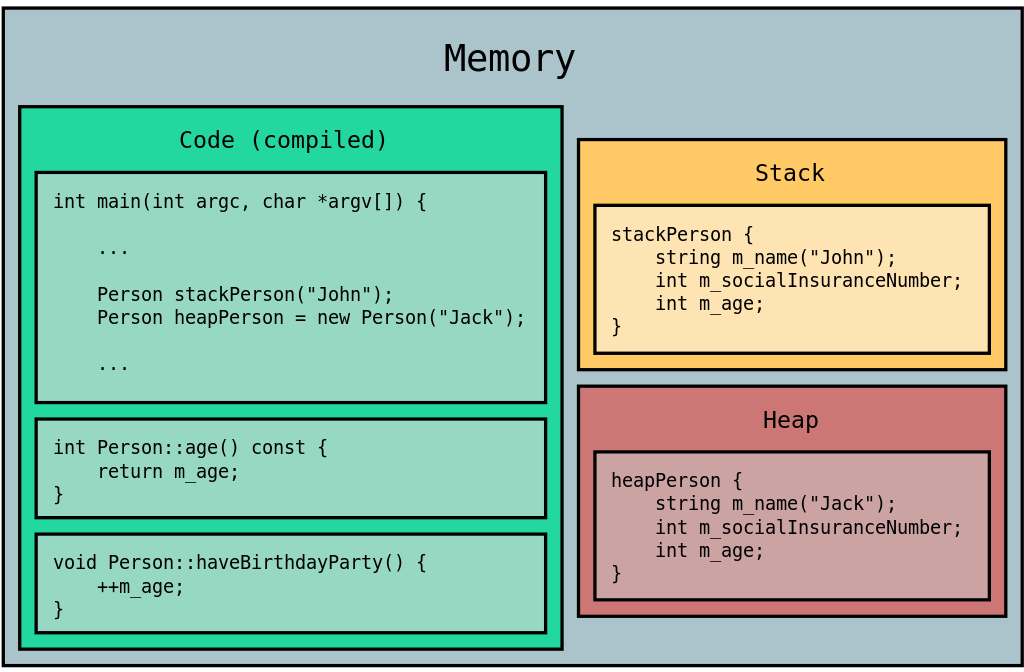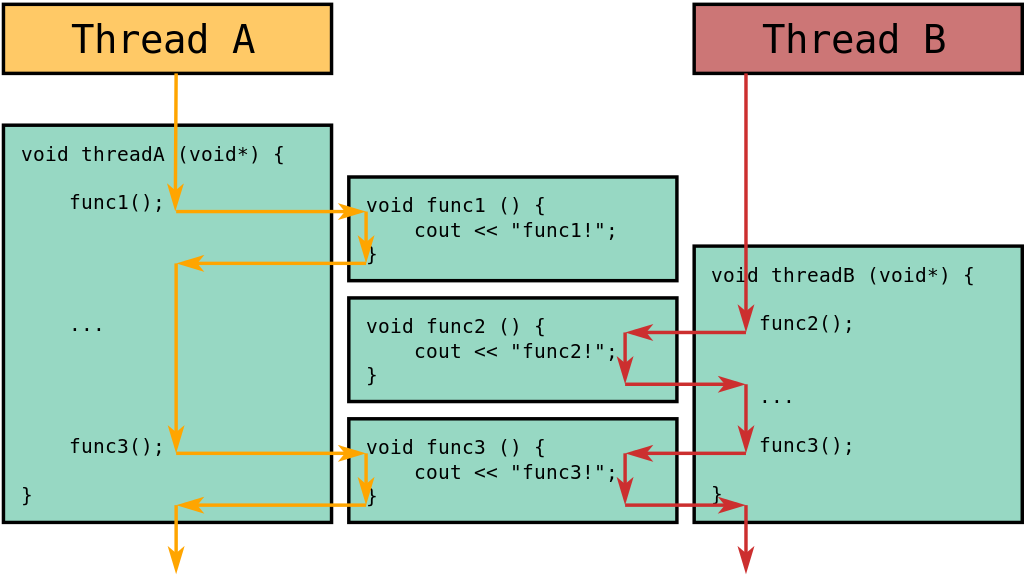When I first started working on a team using Qt (in a C++ environment), I would hear co-workers talk about “objects being on threads”, and then immediately talk about how several threads are accessing the same object. These two seemingly opposite ideas confused me at first. Let’s untagle the mystery!
We’ll start from the very basics, and work our way up. I will first talk about what are objects and threads in the “vanilla C++” sense, and then work it into the context of Qt QObjects and QThreads. Many things mentioned here might seem very obvious to many, but, in my experience a lot of developers get by without a firm grasp on these concepts. I was one of them :D.
What are objects?
When I talk about objects in C++, I refer of course to instances of a class. But what is an instance of a class; how does it really look like? Let’s take a very simple example of a class:
class Person {
public:
Person(string const& m_name);
~Person();
int age() const { return m_age; }
void haveBirthdayParty() {
++m_age;
}
// imagine other methods here
private:
string m_name;
int m_socialInsuranceNumber;
int m_age;
};Now that we have this Person class, let’s see what happens when we instantiate this class:
Person stackPerson("John");
Person* heapPerson = new Person("Jack");What happens, is we allocate memory (either on the stack or on the heap), for the object’s members.
So in this case, m_name, m_socialInsuranceNumber and m_age.
And nothing else- that is all we need to know about that particular instance of the class.
Specifically, we do not care about the method implementations- those are already in memory as part of the executable.

A program running in memory.
Well, you might ask, if the methods are seperate from the object, how does this work:
int heapPersonAge = heapPerson->age();In other words, how does c++ know how to deal with a specific instance method, if there is only one method in memory? The answer is, C++ is sneaky. When you declare/define a method like so:
void Person::haveBirthdayParty()
{
++this->m_age;
}It actually looks like this in memory:
void Person::haveBirthdayParty(Person* const this)
{
++this->m_age;
}So the method is just like any other function, but it takes an implicit this pointer to an instance of the class! To clarify, what we wrote a few lines above:
int heapPersonAge = heapPerson->age();Is actually:
int heapPersonAge = Person::age(heapPerson);Aha! To conclude (barring virtual functions):
An object is nothing more than a collection of its members sitting somewhere in memory. Methods are not part of an object; methods are just functions that act on objects.
Threads
One of the first things we learn as programmers, is the notion of control flow through the programs we write; There is an order in which functions are executed by the CPU.
Knowing this, you can think of a thread in a multi-threaded program as one of many control flows through it. All threads share the same program code, heap memory, but have individual stacks and program counters (to keep track of where they are in their control flow). Let’s take a look at threads as control flows:

Two threads executing functions concurrently.
One of the most important things to see in the diagram, is that all code is accessible to any thread. Two threads could be executing the same function at the same time.
In addition, even though the diagram shows the two control flows side-by-side, you cannot make any assumptions on where the two threads are relative to each other. This is the concern of multi-threaded programming and thread synchronization, which is beyond the scope of this article.
In terms of memory, as said before, each thread has its own stack for local variables, but all threads share the heap.
Threads and Objects
As we saw in the last section, a method is just another function, and thus many threads can call a particular method, on the same object, even at the same time. All a thread needs is a pointer to the location of an object (even if the object is on another thread’s stack :S), and it is now free to call any of its methods. The lesson here is:
A thread is control flow. A single object’s method, being a glorified function, can be called by any thread at any time. An object does not belong to any single thread.
Join me in part 2 to see how these notions translate to working with Qt!